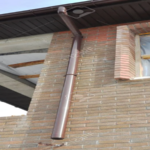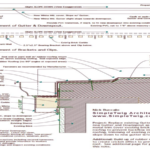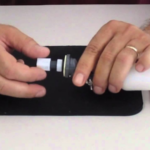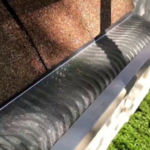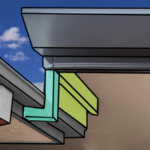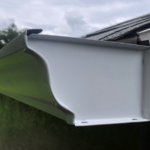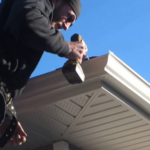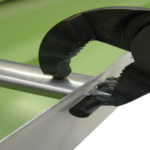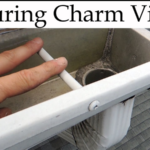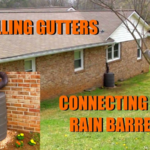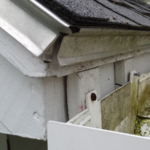If you’re concerned about your home’s gutters being able to withstand severe weather, you can rest easy by calling a professional handyman to install them. Gutters are an important part of your home’s exterior, and they play a vital role in protecting your property from weather damage. By redirecting rainwater away from your home, gutters help to prevent flooding, water damage, and even mold growth.
If your gutters are old or in disrepair, they may not be able to properly protect your home during a storm. That’s why it’s important to have them regularly inspected and repaired by a professional. Handymen are experienced in gutter installation and repair, and they can ensure that your gutters are in good working condition.
Gutter installation is a relatively simple process, but it’s important to make sure that it’s done correctly. Incorrectly installed gutters can cause a number of problems, including leaks, water damage, and even mold growth. A professional handyman will take the time to properly install your gutters, and they will also make sure that they’re properly sealed and secured. This will help to ensure that your gutters can withstand even the strongest winds and heaviest rains.
How are gutters secured to house?
There are several ways to fasten gutters to a house. The most common is to use hangers that are screwed or nailed into the fascia board, which is the board that runs along the edge of the roof. Another way is to use brackets that are attached to the house with screws or nails. The brackets hold the gutter in place and keep it from moving. The third way is to use a combination of hangers and brackets. This is the most secure way to fasten gutters to a house.
What is the most common problem with gutters?
One of the most common problems with gutters is that they can become clogged with leaves and other debris. If the gutters are not cleaned on a regular basis, the water can back up and cause damage to the roof and the home.
What are the best gutters for heavy rain?
There are many factors to consider when choosing the best gutters for heavy rain. The size and type of gutter system, the slope of your roof, and the amount of rainfall in your area are all important factors to consider.
- Sectioned gutters: These gutters are made up of multiple sections that are joined together. They are typically made of aluminum or vinyl.
- Continuous gutters: These gutters are one continuous piece that is installed along the length of the roof. They are typically made of aluminum or stainless steel.
- Seamless gutters: These gutters are made from a single piece of material, such as aluminum, that is custom-fit to the length of your roof.
The slope of your roof is also an important factor to consider. If the slope of the roof is too steep, the gutters will not be able to effectively drain the water. The amount of rainfall in your area is also an important factor to consider. If you live in an area with a lot of rainfall, you will need gutters that can handle the increased amount of water.
How do you secure falling gutters?
If your gutters are falling off your house, you need to take action to secure them. Depending on the severity of the situation, you may be able to do this yourself or you may need to hire a professional.
If the gutters are only slightly loose, you may be able to secure them with some additional screws or nails. If the gutters are more severely damaged, you may need to replace sections of the gutter or the entire gutter system.
In either case, it is important to take action to secure your gutters so they don’t cause further damage to your home. If you’re not sure how to do this, you can always contact a professional gutter installer for help.
How do you secure loose gutters?
- Inspect your gutters and downspouts to see if they are securely attached to your home. If they are not, use a ladder to climb up and reattach them.
- If your gutters are full of leaves and debris, use a garden hose to flush them out.
- Install gutter guards or screens to keep leaves and debris from clogging your gutters in the future.
- Inspect your gutters and downspouts regularly to ensure they are free of debris and functioning properly.
What holds up gutters on a house?
The most common type of gutter is the sectional gutter, which is composed of various interlocking sections that are installed along the edge of the roof. The sections are usually made of aluminum, although they can also be made of other materials such as vinyl or steel. The sections are connected together using either brackets or hangers, and the gutters are then attached to the house using nails or screws.
Why is gutter pulling away from house?
One of the most common reasons why gutters pull away from houses is because of the freeze/thaw cycle. When water freezes in the gutters, it expands and puts pressure on the gutters. This can cause the gutters to pull away from the house. Another reason why gutters pull away from houses is because of improper installation. If the gutters are not installed properly, they will not be able to properly drain water away from the house. This can cause the gutters to pull away from the house and cause water damage.
Should gutters be nailed or screwed in?
If you have a smaller, lightweight gutter made from a material like aluminum, you may be able to get away with just nailing it into place. However, if you have a larger or heavier gutter, or if your roof has a steep slope, it’s best to use screws to secure the gutter. This will help to prevent the gutter from coming loose over time.
Conclusion
If you’re looking for a way to protect your home from weather damage, consider hiring a professional handyman to install gutters. Gutters can help direct rainwater away from your home’s foundation and prevent flooding and water damage.


